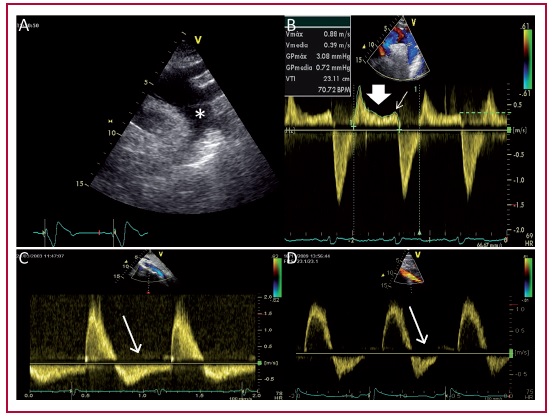Descending Aorta Diastolic Retrograde Flow Assessment for Aortic Regurgitation Quantification
pp 336-341
DOI:
https://doi.org/10.7775/rac.es.v84.i4.9129Keywords:
Heart Failure, Echocardiography, Doppler, Magnetic Resonance ImagingAbstract
Background: Diastolic retrograde flow in the descending aorta has been associated to the severity of aortic regurgitation; however, most of the parameters related to flow velocity are not validated with a reference imaging technique.
Objective: The aim of this study was to assess the usefulness of diastolic retrograde flow in the descending thoracic aorta and the abdominal aorta in the quantification of aortic regurgitation using magnetic resonance imaging as reference.
Methods: Forty consecutive patients were included in a prospective echocardiography and magnetic resonance study. The following parameters were analyzed by pulsed-wave Doppler: a) velocity-time integral of the diastolic retrograde flow and b) peak end-diastolic velocity of the regurgitant flow, both in the thoracic aorta, and c) holodiastolic flow reversal in the abdominal aorta. The cardiac magnetic resonance protocol included phase contrast sequences to calculate the regurgitant fraction. Values ≥30% were considered as severe aortic regurgitation.
Results: Eleven patients (30%) presented a regurgitant fraction ≥30%. The velocity-time integral of diastolic retrograde flow demonstrated the best diagnostic accuracy to detect severe aortic regurgitation: AUC=0.87, p<0.001. A cut-off value for the velocity-time integral of diastolic retrograde flow >15cm showed 91% sensitivity and 86% specificity to detect severe aortic regurgitation. Holodiastolic flow reversal in the abdominal aorta demonstrated excellent specificity (100%) but low sensitivity (50%) to detect severe aortic regurgitation.
Conclusions: Diastolic retrograde flow assessment in the thoracic aorta allows an accurate diagnosis of severe aortic regurgitation. Holodiastolic flow reversal demonstrated good specificity but low sensitivity

Downloads
Published
Issue
Section
License
Copyright (c) 2025 Argentine Journal of Cardiology

This work is licensed under a Creative Commons Attribution-NonCommercial-ShareAlike 4.0 International License.













